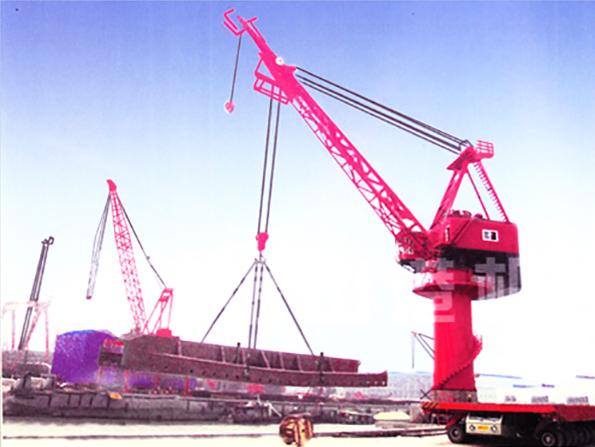Copyright © Wuxi Xishan Port Hoisting Machinery Co., Ltd. All Rights Reserved. Site Map
- +86-13906198527
- sales@htlqzjx.com
- No. 225-1, Chengnan Road, Xinwu District, Wuxi City

Wuxi Xishan Port Hoisting Machinery Co., Ltd. shares what are the elements for the reasonable configuration and layout of fixed cranes?
The rational configuration and layout of fixed cranes have the following elements:
1. Crane type selection: First, determine the type of crane required, including tower cranes, gantry cranes, bridge cranes, etc. Choose the appropriate crane type according to different working environments and work requirements.
2. Load-bearing capacity: To determine the load-bearing capacity of the crane, select an appropriate crane based on the weight and size of the required lifting objects. The selection of load-bearing capacity should be evaluated based on the actual situation to ensure that it can meet the engineering needs.
3. Height and span: The height and span of the crane are also factors to consider. The height can be determined based on the limitations of the work area and work requirements, while the span should be selected based on the scale of the project and the size of the work area.
4. Control system: The control system of the crane should consider the convenience and safety of operation. Common control methods include manual control and remote control. Choose the appropriate control method according to actual needs.
5. Safety protection devices: Crane safety protection devices are also very important, including limiters, heavy-load protection devices, anti-collision devices, etc. These devices ensure the safe operation of the crane while protecting the safety of the operator and the surrounding environment.

6. Access configuration: The access configuration of the crane also needs to be considered to ensure the safe entry and exit of operators and lifting objects. Appropriate passages and safety facilities should be set up at entrances and exits, such as handrails, protective railings, etc.
7. Reasonable layout: The layout of the crane should fully consider the space utilization and work efficiency in the working area, and avoid interference and obstruction between equipment. Reasonable layout can improve work efficiency and increase productivity.
8. Maintenance and overhaul: Maintenance and overhaul of the crane are also factors that need to be considered. Each component of the crane requires regular maintenance and inspection to ensure the normal operation of the equipment.
9. Environmental factors: The configuration and layout of the crane must also consider environmental factors, including temperature, humidity, vibration, etc. Some special working environments may require additional measures to ensure safe operation of the crane.
10. Transportation and installation: The transportation and installation of the crane also need to be considered. Before choosing a crane, make sure it can be transported and installed smoothly to avoid affecting the progress of the project.
To sum up, the reasonable configuration and layout of fixed cranes need to consider the type selection of the crane, load-bearing capacity, height and span, control system, safety protection device, entrance and exit configuration, layout rationality, maintenance and overhaul, environmental factors, transportation and installation and many other factors. Only by taking these factors into consideration can the effective and safe operation of the crane be achieved.